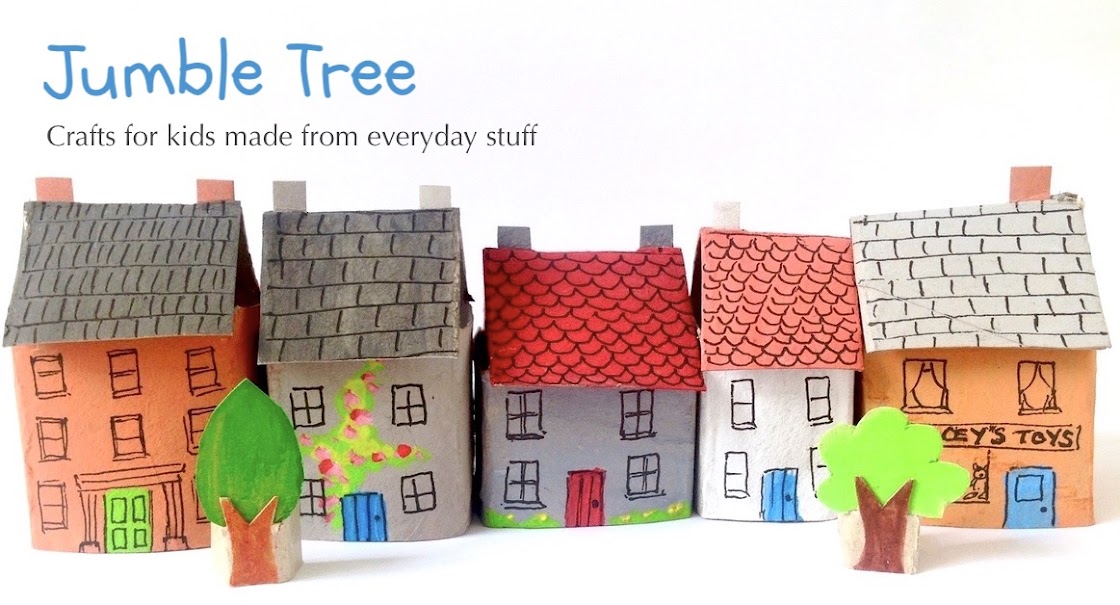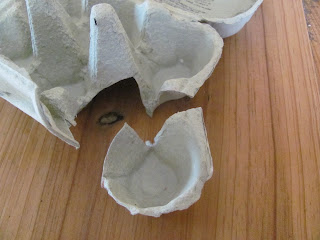This craft project is close to my heart. As an army wife I can't think about Remembrance Day without getting a lump in my throat. Such a mix of emotions, as we honour those who died in the First and Second World Wars and all the conflicts since, and I remember family and friends in the Forces. Some here, some not.
These poppies are made from egg cartons, and I've gone for three petals instead of four because I thought they looked more poppy-like. I've added a little paper centre too, for the spikey stamens, but you can leave this part out if you like.
You will need:
Egg carton
Scissors
Pencil
Craft glue (we used PVA)
Paint
Black paper (optional)
Paper plate (for the wreath)
Egg cartons come in all shapes and sizes and this does make a difference when you're trying to make flowers.
If the cups are nice and round, then it's easy enough to cut one out like this, with an neat edge and make three, roughly evenly spaced marks, for the gaps between the petals.
The thing is, most egg carton won't have nice round cups, they'll probably look a bit more like this when you cut them out, with a split where the cup joined the middle part of the carton.
So, we're going to work with the split, and incorporate it into our poppy, by using it as one of our three marks, adding two more so they'll all as evenly spaced as possible. (Cut off the rough edges at the top if they're in the way.)
With the scissors, cut down to the base of the egg cup where you've made your two marks.
Then cut and gently curve each of the three petals.
Carefully round off the edges of each petal by snipping the corners. And then very gently, while holding the flower in the middle, carefully push the petals back. This needs to be done with care or the cardboard can rip.
In the picture below I'm snipping off the corners of the round neat shaped egg carton cup.
In the end the round egg carton cup and the one with the splits look pretty similar!
Paint your poppies, remember to do the back of the petals as well, and add a black blob in the middle - this looks much better and more natural if it's a bit irregular, and not too perfect and round.
To make the wreath, paint the rim of a paper plate green. When it's dry, make a hole in the centre of the plate (best done by an adult) and cut out the middle section.
This next step is optional as the poppies look lovely as they are, but the little paper stamens gives them a bit more detail.
Cut a strip of black paper about 0.5-1cm wide and cut into 5cm pieces.
Roll one of the short pieces up, then open it and snip a fringe along one side - roll it up again, but loosely this time.
Brush a good layer of glue in the middle of black centre of your poppy and add the rolled up paper. Let it unfurl a little, but make sure it stays in the glue. Give it a light press and then leave your poppy to dry.
Once dry, press the fringed paper out with your finger. We made 15 poppies for our wreath.
Make a hole in your paper plate wreath and thread through some string so you can hang it up. Then glue on your poppies.





























































